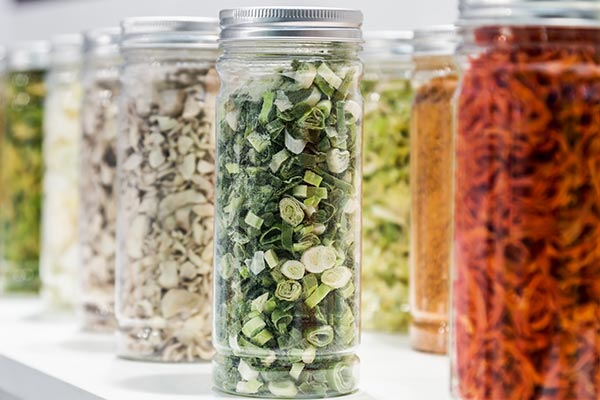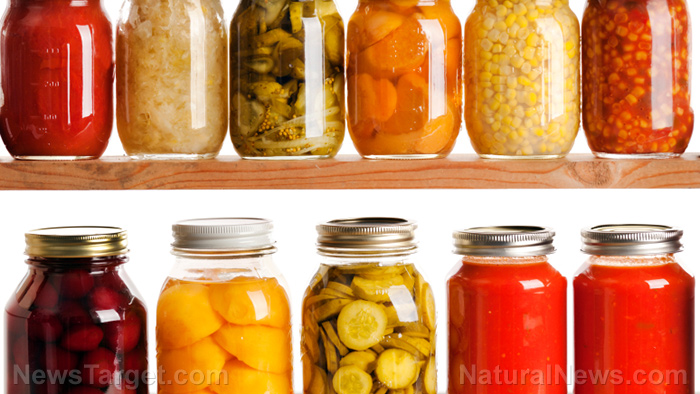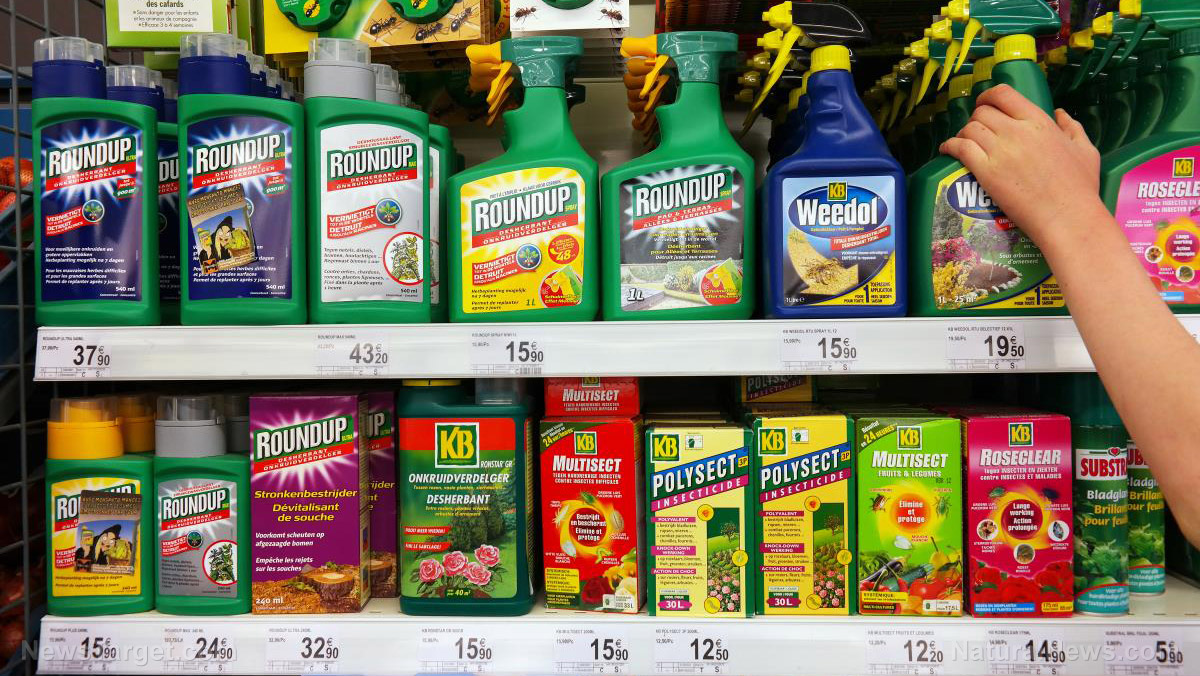
Advertisement
If you want to avoid harmful ingredients in food like added chemicals and other dangerous ingredients, you can learn how to preserve food using methods like freeze-drying or dehydration. (h/t to AllNewsPipeline.com)
Consumers are often dealing with food shortages and increasing food prices. If you want to secure more supplies for your stockpile before SHTF, invest in appliances that you can use to preserve food like a freeze-dryer or a dehydrator. You can also start a home garden to grow fresh, organic food for your whole family. (Related: Food preservation tips: How to salt meat for your stockpile.)

Tips for freeze-drying food at home
Freeze-drying machines are the more expensive option, with used machines being sold for at least $1,000. New freeze-drying machines can cost anywhere from $2,000 to $4,000.
To save money, you can also opt to freeze-dry food at home using alternative methods.
The home freezer method
Freeze-drying food may seem overwhelming, but you can also do it with a home freezer. However, since you don’t have a freeze-dryer this method will take longer.
To freeze-dry food using your freezer, you will need the following items.
- A cookie sheet, cooling rack, or large plate
- Food to be freeze-dried
- Storage space in the freezer
Preparation:
- Wash and cut up the food into small slices or chunks.
- Place the food on a tray in a single layer. Don’t stack the sliced food.
- Place the tray in your freezer and keep it away from other food items.
- Freeze the food for two to three weeks. Check it periodically to make sure the food is being freeze-dried.
- Once done, remove the food and store it in an airtight container or bag.
The dry ice method
The dry ice method doesn’t require special machinery.
You will need the following items:
- A large Styrofoam cooler
- Food to be freeze-dried, cut into slices or chunks
- Dry ice
- Freezer-safe, durable and airtight bags
Since dry ice lets all moisture from food evaporate very quickly, this method is much faster than using a home freezer, unless it is incredibly humid in your area.
Ideally, you should start the freeze-drying process when the humidity level is low if not zero. This is because the more moisture in the air, the longer the freeze-drying process will take.
Preparation:
- Wash and slice the food into small pieces or chunks. Store them in airtight, freezer-safe, but unsealed bags.
- Place the freezer bags in a large Styrofoam cooler.
- Cover the food with dry ice.
- Wait for at least 24 hours or longer.
- When the food is properly freeze-dried, remove the bags of dried food and store them properly.
Tips for dehydrating food at home
If you prefer a faster method, learn how to make dehydrated food. Knowing how to dehydrate food can also help prevent food waste since you can preserve items to be used later before they go bad.
There are two ways to store dehydrated food for long-term storage: Using a canning jar sealer and using Mylar bags and oxygen absorbers.
To dehydrate foods like fruits and vegetables, you will need a dehydrator and vacuum-sealed bags to store food. You can also store dehydrated food in clean canning jars, airtight food containers or freezer bags.
Vegetables
Vegetables must be dehydrated at 125 to 135 F for eight to 12 hours.
Generally, when dehydrating food that you eat raw you don’t need to pre-cook it before drying.
However, vegetables like broccoli, celery and corn should be blanched before dehydrating. Blanching means cooking the food item in boiling water and submerging it in cold water.
Blanching denatures enzymes that may affect the shelf-life and quality of the vegetables.
To cut this step out, you can dehydrate frozen vegetables since they are already pre-cooked/blanched and ready to dehydrate.
Fruit
Fruit needs to be dried at 135 to 145 F for eight to 15 hours.
Before dehydrating, some fruits like apples and bananas need to be treated with a citrus wash to delay browning. If you want to dehydrate other fruits, check food-specific recipes for the best results.
After drying, the fruit’s moisture content should be around 20 percent. Even if you’re extra careful, the fruit will dry unevenly. Fruit also requires an extra step before storing.
After the fruit cools completely, store it in plastic bags or glass jars for seven to 10 days. Shake the jars daily.
Once done, store the fruit as is or ground it up into a powder. During this time, condensation should not develop. If it does, it means there is too much moisture in the fruit, so process it again in your dehydrator.
Jerky
Jerky should be dried at 160 F for four to eight hours.
When processing meat to make jerky, follow recipes properly to avoid the risk of harmful bacteria.
According to the United States Department of Agriculture (USDA) Jerky and Food Safety Fact Sheet, bacteria in meat can survive the temperatures of a dehydrator (150 to 160 F) when cooked at a warm temperature for a long time.
To minimize the risk of food born illnesses from E. coli and salmonella, meat and chicken need to be pre-cooked at 160 F and 165 F, respectively, before dehydrating. Doing this helps destroy harmful bacteria that would survive under a dehydrator’s temperature setting.
Note that the shelf life of homemade jerky is one to two months. Meanwhile, store-bought jerky can last from eight months to one year.
Here are different foods that you can dehydrate at home:
Fruits:
- Apples
- Bananas
- Apricots
- Cherries
- Grapes
- Mangos
- Peaches
Vegetables:
- Beets
- Broccoli
- Cabbage
- Carrots
- Eggplant
- Mushrooms
- Zucchini
Herbs:
- Basil
- Dill
- Lavender
- Marjoram
- Mint
- Oregano
- Rosemary
- Sage
- Thyme
Here are other methods to try if you don’t want to spend money on a dehydrator:
Sun drying
Sun drying is one of the oldest and simplest methods used to dehydrate foods. With this method, you need to lay fruits like figs or mangos on a mesh screen or tray made with wooden dowels.
Next, cover the food with a second screen to protect it from pests and insects. You can use this method if you are in a sunny area with low humidity and a minimum temperature of 86 F.
When using this method, avoid screens made with hardware cloth because they may oxidize and leave residue on your food. Note that sundrying fruits may take several days to fully dry.
Air drying
Air drying is another simple dehydration method that doesn’t require any special equipment. Like sun drying, air drying places food in the shade instead of the sun.
This helps protect foods from the sun’s powerful rays and it’s a great method for dehydrating herbal teas, leafy greens and spices.
Solar drying
Solar dehydrators are powered by the sun and they can be used to dehydrate food even without electricity.
Some solar dehydrators look like a tabletop greenhouse. You can buy one or make it at home using materials that you can get from the local hardware store.
Oven drying
An oven that reaches a temperature of at least 140 F can also be used to dehydrate food. While oven drying can take at least six to 10 hours depending on the specific food, this method is ideal if you don’t want to buy a dehydrator.
Make sure your oven can be set to a temperature of 140 F or less since higher temperatures will cook food instead of drying it. Prop the door open while dehydrating foods so extra moisture can escape during the drying process.
Secure supplies for your survival stockpile by learning how to properly freeze-dry or dehydrate food like fruits and vegetables. These food preservation methods can also help you save money and avoid food waste.
Visit Foodstorage.news to read more articles with tips on food storage and preservation.
Watch the video below to know more about the benefits of preserving food through freeze-drying.
This video is from the Health Ranger Store channel on Brighteon.com.
More related stories:
Food preservation 101: A step-by-step guide to air-drying fruits.
Prepping skills: 15 Food storage and preservation methods to learn before SHTF.
Freeze-drying is one of the best ways to preserve food for long-term storage.
Sources include:
Advertisements







